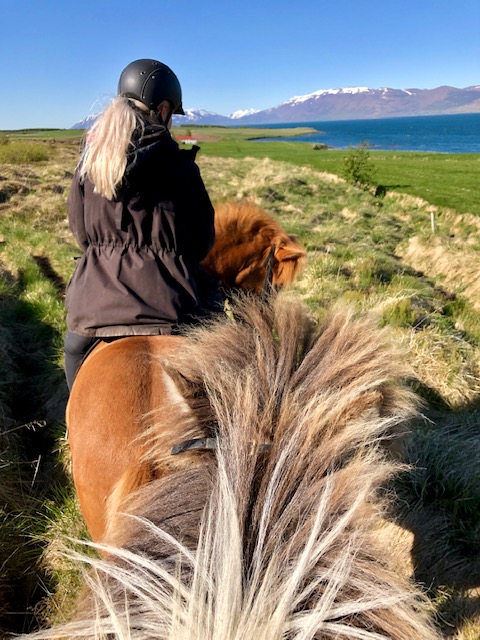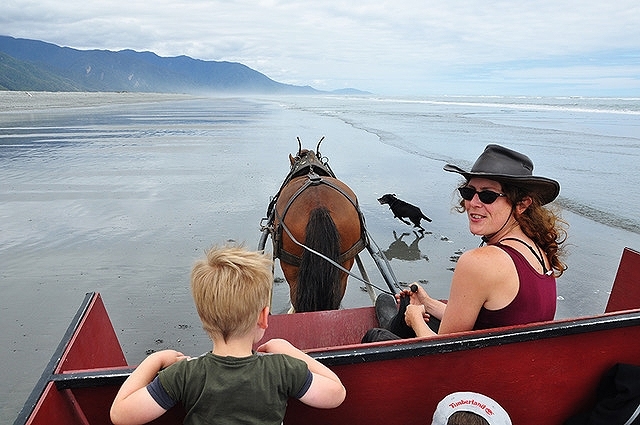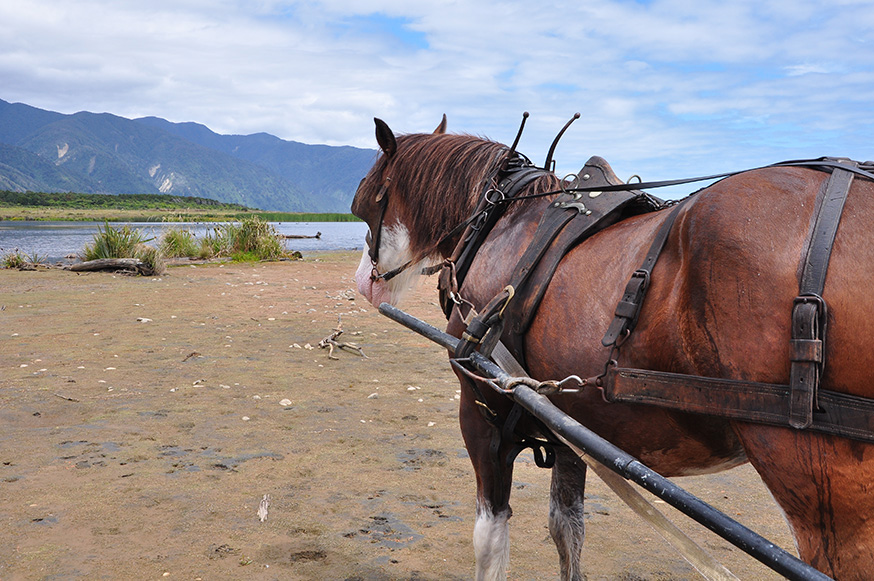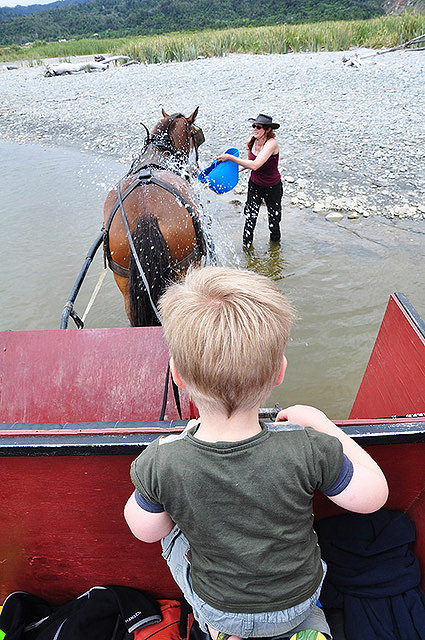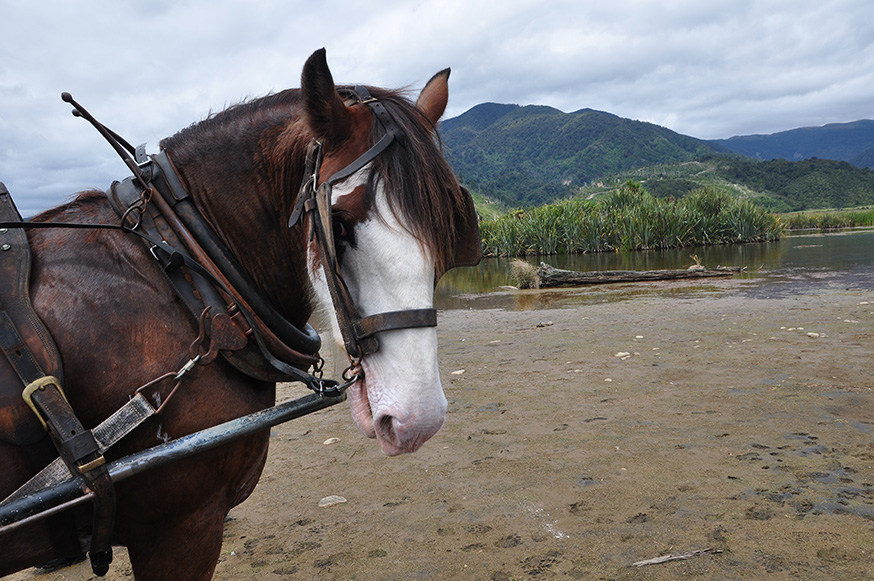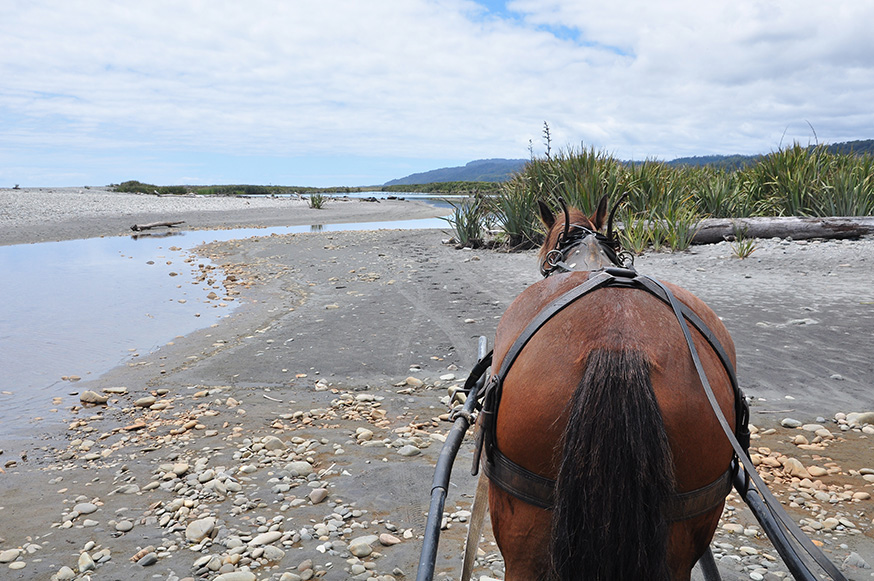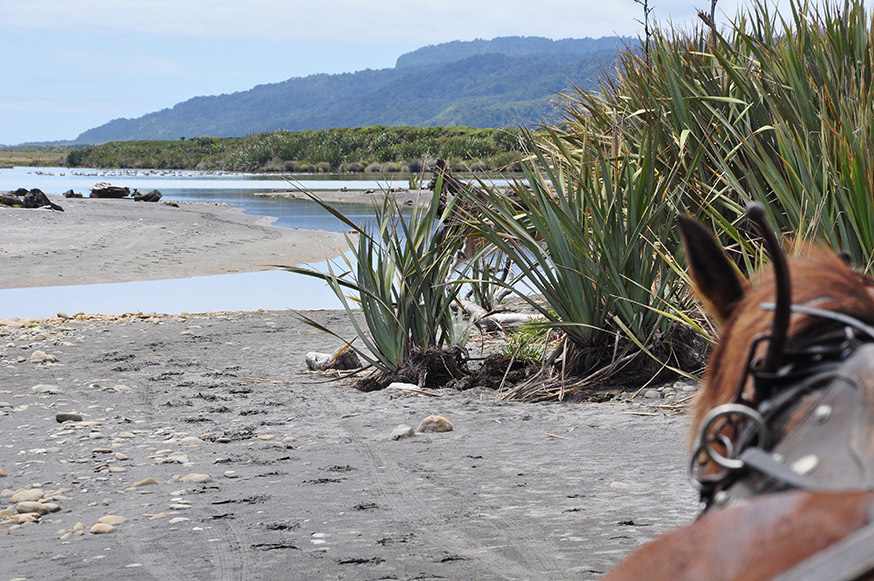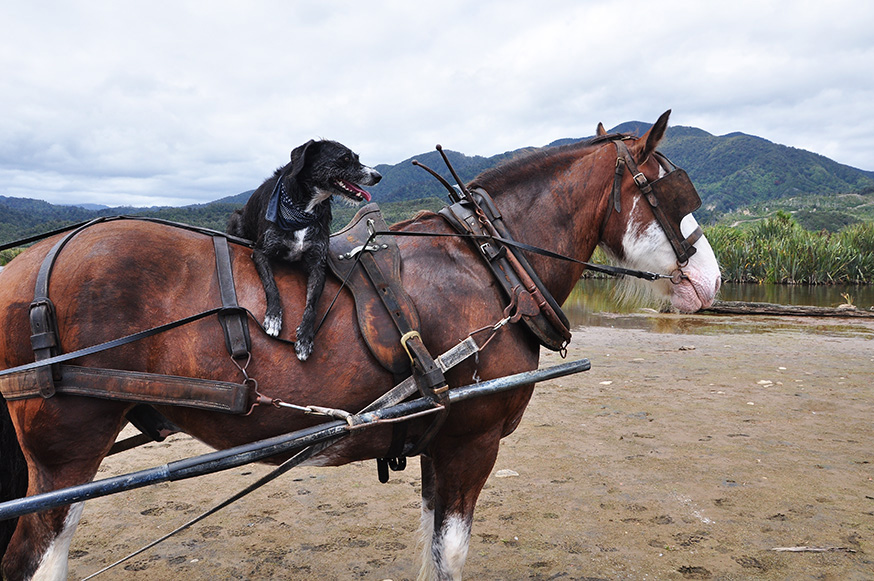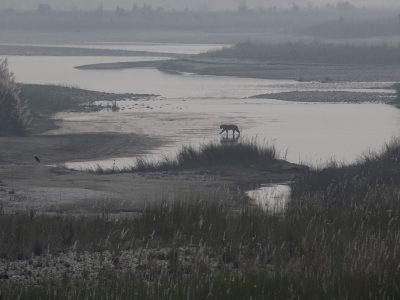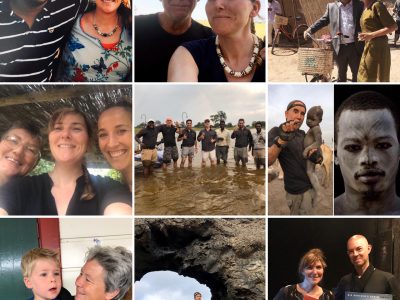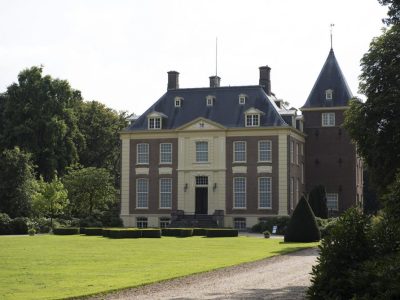A little adventurer or traveler who loves a slow, intense way of traveling should definitely get on the back of a horse. The more experience, the more intense the experience, we think. Both for advanced riders and myself, but also for beginners like Henk,
Text ( and photography ): Angelique van Os | Photography: Henk Bothof
Horseback riding requires fitness. Yes, your muscles really do something. Not only the horse works. Balance and a firm seat form your basis. And be alert, because in the wilderness you can encounter anything, including other animals. Horses can react very directly to this. We give six tips on destinations that are worth discovering. And we would like to add more locations in the future, because a ride on the African savannah or the Mongolian tundra, for example, is definitely on our bucket list!
Tip 1: Naukluft, Namibia
The first time that Henk ever sits on a horse, starts right away. The view consists of endless views of the vast surroundings of Naukluft and Sossus-vlei (Namib-Naukluft National Park) in West African Namibia. The desert in this area counts 55 million years, making it one of the oldest in the world. We are on the side where the loose sand turns into rocks and lightly covered mountains. I ride away on my white Arab once in a while to make a gallop, because a terribly free feeling gives me. As if we disappear into the wide, desolate mountain landscape. Once in a while a springbok hops by and in the distance we see a herd of zebras watching us curiously. Furthermore it’s quiet and there’s no soul to be seen. Read HERE our report about Namibia..
Desert Homestead offers several trips that run right through the country. Try a sundowner: after more than an hour on the road with the friendly South African guide Meldinda van den Berg, one of the many beautiful places is selected where a colleague waits with snacks and drinks until the sun goes down. The horses rest a bit, only to return home after half an hour under a clear starry sky. Multi-day trips are also possible. A wonderful experience: alone in the world with your horse. A three-hour sundowner trip costs around €80 per person, including drinks and snacks.
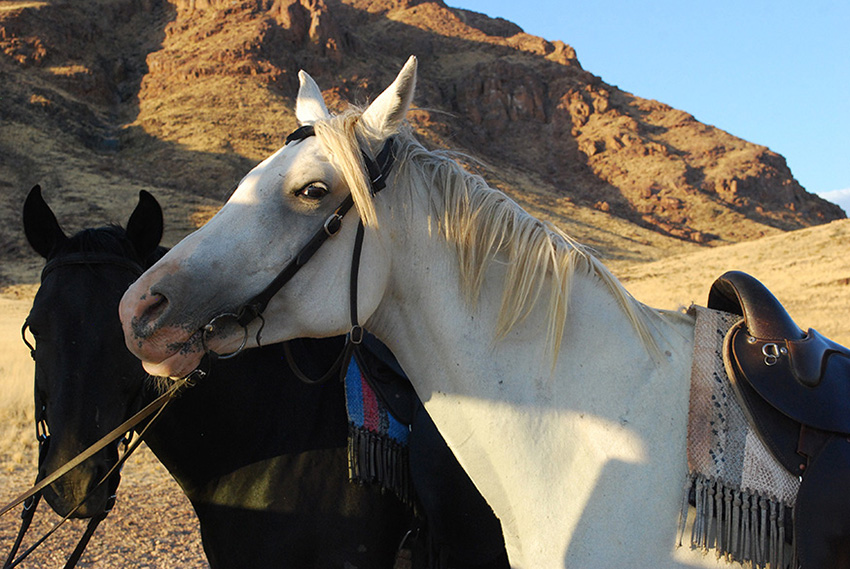
The horses are ready. 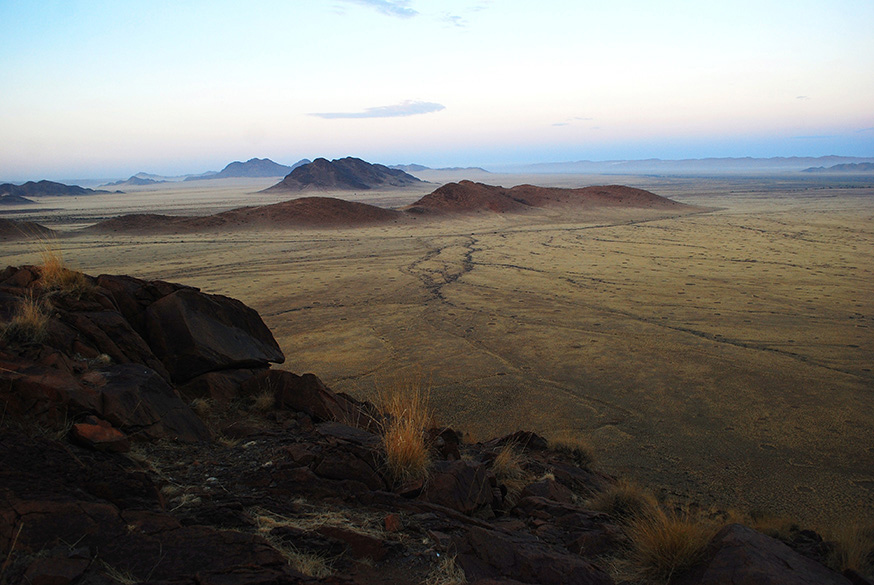
Magnificent views over this tranquil landscape. 
Relax during the sundowner. 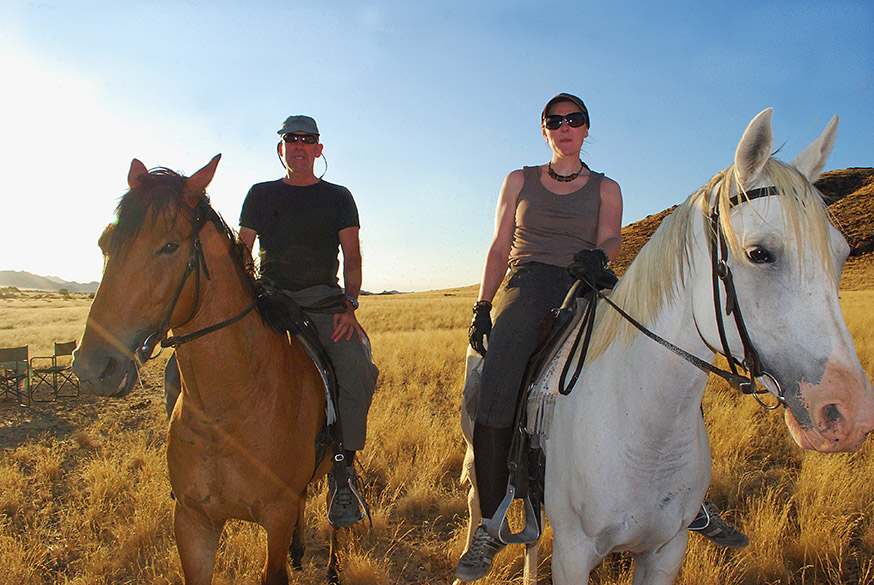
Lets go!
2. Hella & Akureyri, Iceland
The surreal Iceland, with its lunar and volcanic landscape, vast plains, many waterfalls and green hills, is perfect for a horseback ride or multi-day hike. Unfortunately that was not yet possible for me, but fortunately I was able to enjoy two small, strong Icelanders for a couple of hours. The quirky horses don’t originate from Iceland by the way, but were brought along with the Vikings from Scandinavia and Great Britain. However, for centuries there has been an import ban on horses, so the breed remains pure and has developed its own character. The breed descends directly from the European primal horse: Equus Stenonsis.
In 2009 I visited a small ranch in the area of Hella/Vik (the south of Iceland). There I climb a temperamental dark brown Icelander, who is nice and fresh and clearly feels like a ride. When you ride an Icelander, it takes some getting used to, because these sober, intelligent animals don’t have three courses (walk, trot, canter), but mostly five. The extra gaits are called tölt en amble. Because I’ve been on an Icelander before, it doesn’t feel unnatural. The tölt gives you a free feeling, as if you are floating. Which is quite crazy, because actually there is no floating moment in this corridor, like in a regular trot. You don’t have to ride lightly, but you can sit deep in the saddle. In the meantime we wander over streams full of thick stones, gallop over vast fields with nothing but emptiness and the horizon in front of us. It’s inconceivable that those little hooves are so strong and carry me over the bumpy ground with ease. The wind is blowing and the horse is tantamount to relaxation. Furthermore, it is quiet.
This ride was a spontaneous activity. If you have the opportunity and are able to ride a bit, go inland in late spring or in the summer months. There are several providers with which you can make beautiful treks through the untouched landscape of ‘ice and fire’. Keep in mind that the weather can be very changeable, so wear layers of clothing and a windproof jacket. In September it is possible to participate in the so-called göngur through various travel agencies: herding the horses together. Many Icelanders live in the wild during the autumn and winter months. That is without a doubt a special experience.
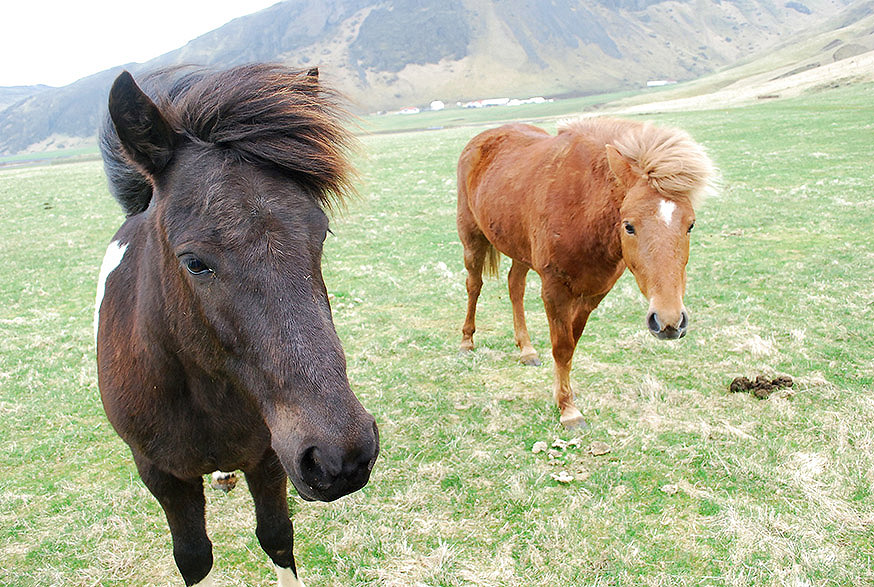
The horses come to look curious. 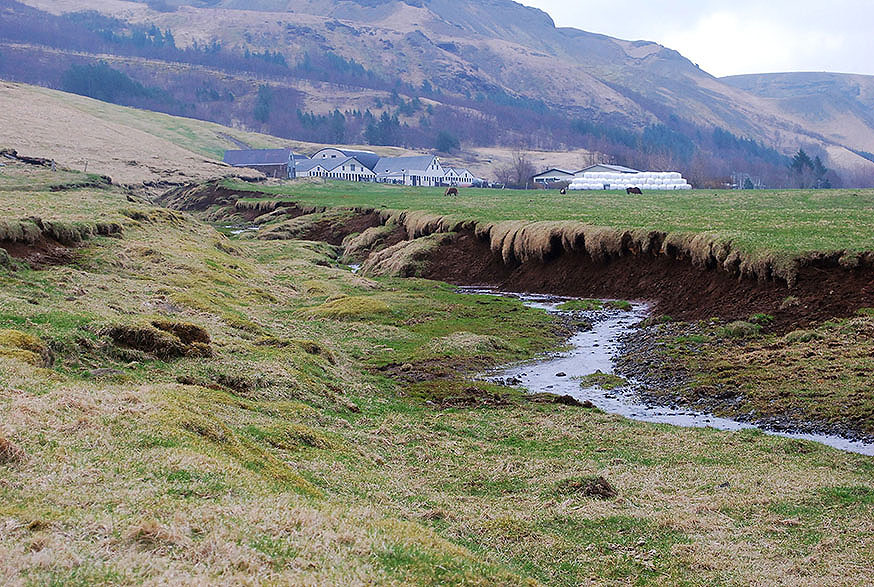
Surroundings Hella Vik 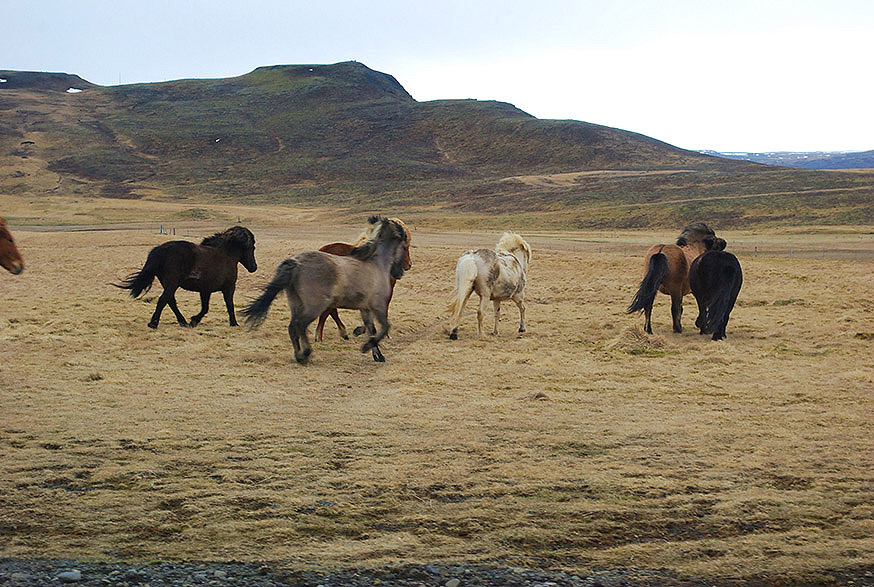
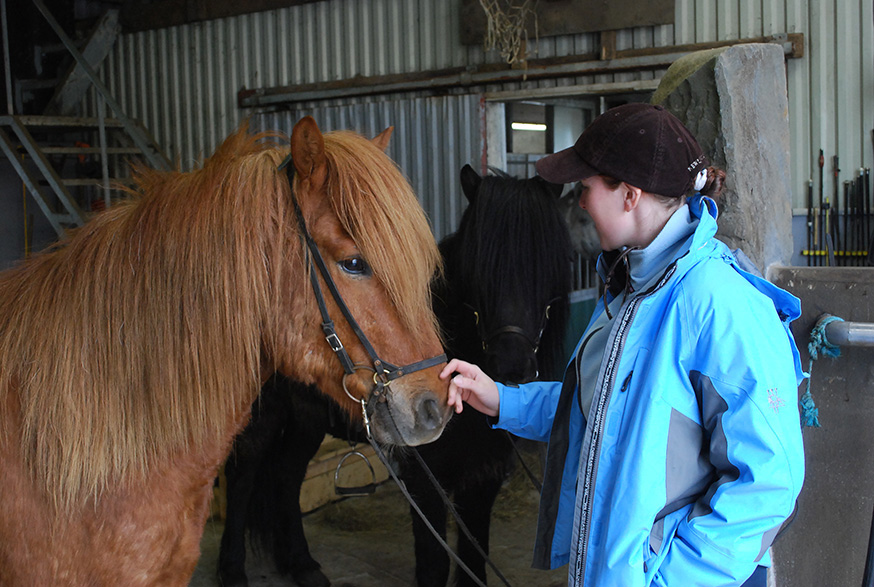
Let’s get to know each other. 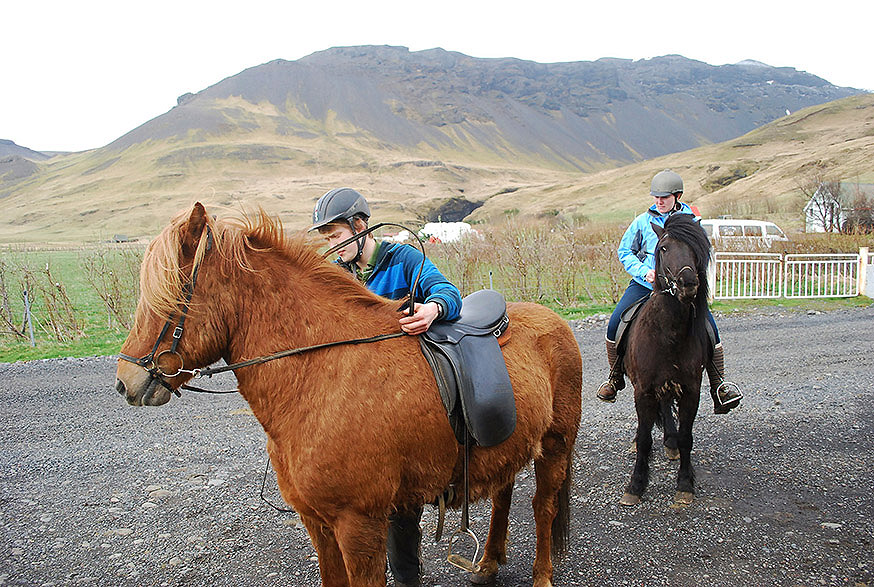
Let’s see if everything’s okay… 
…and here we go!
In May 2019, exactly ten years later, I will be in Iceland again. Unfortunately the south has been overrun by tourists. Fortunately, this does not apply to the unspoilt north, where I am now and where there is plenty to discover. On the last day of our trip with Voigt Travel, there is the possibility to make a ride just outside the northern capital, Akureyri. I don’t say no to that. I go out with the young Sunneva, who helps with running the horses and taking care of them on a daily basis. They manage more than sixty Icelanders. The landscape here is a bit sloping and borders on a small lake. We stroll through the fields, facing a clear blue sky. After half an hour of driving through several corridors Sunneva asks me if I want to ride her beautiful fox. Elsa is a nine year old mare and daughter of a national champion. Her beautiful thick forest with moons shines in the sunlight. After a few minutes Elsa walks a lovely tölt. With minimal help she feels me perfectly. When we arrive at the main road (where a car passes once an hour), we can speed up the pace considerably. Parallel to the road is a light sandy path of several kilometers. So give it a little bit of throttle. Elsa shifts to the amble and I feel like I’m floating. What a special feeling! Just before we return to the ranch, the horses are cooled down in the fresh water to relax their muscles. Then saddle, reward and roll in the meadow.
The family business of the sympathetic Sunneva and her father Ólafur Adalgeirsson Skjaldarvik Ferdapjónusta is a very pleasant place and easily accessible from Akureyri. It is far enough away from the main road, along a lake and surrounded by hills. They also offer multi-day trips and are accessible to all riding levels. In addition to horseback riding, you can also spend the night in the attractive rooms, which are beautifully decorated by the lady of the house. You can eat in the restaurant, there are beautiful (but expensive) regional products and clothing for sale. You can also rent bikes. But as a horse lover, you would prefer to sit on the back of an Icelander. Look HERE for more information about Icelanders. And look HERE for a beautiful photo book about Icelanders that is for sale in our shop.
3. Abruzzo, Italy
In the heart of the rugged and authentic Italian Abruzzo, near the village of San Stefano, it is possible to go horseback riding with Claudio Mecoli as a guide. For a number of years now, he has owned a small herd with which he takes groups on a daily basis. I frown my eyebrows when he comes with two small, slender horses. Do those narrow hooves have to brave the rugged rocky landscape? Within five minutes the anxiety turns out to be a false alarm, because despite their small feet the animals move with ease over steep paths and rough stones. They are used to it and are bursting with energy. Sagging down in the saddle, reins loosely in the hand and blindly marrying the horse. Here too there is no living soul to be seen. However, Claudio is haunted by his faithful companion, Budino. Whenever he feels like it, this donkey goes along with him. Like a faithful dog, he chases his owner on his dead field, grazes a bit and then with an exuberant sprint he keeps up with his flock. After a long climb, the view from Rocca Calascico over Gran Sasso Imperatore and Castel del Monte is breathtaking. The village forms the heart of yellow and grey mountain views that seem to flow into the horizon. The winding roads are quiet and deserted and all that beauty is just one of the many driving possibilities in this area. In the booklet The Sibyl, the Saint, and the shepherd, by Rodolfo Lorenzi, more than 839 (!) kilometres of bridle paths are described that run through the national parks of Abruzzo.
Info: Claudio Mecoli | claudio.mecoli@gmail.com | + 39 3476073353| Read HIER my story about Abruzzo.

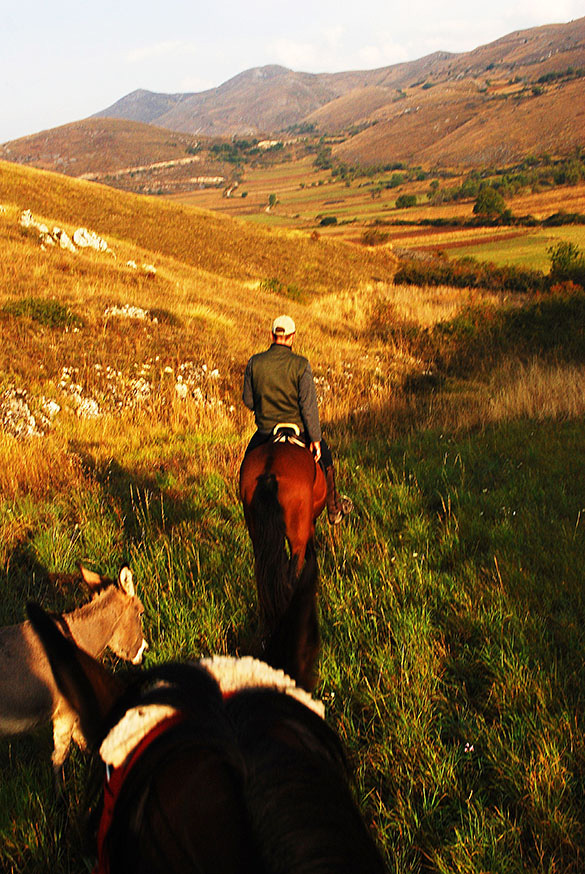
Surrounded by beautiful scenery. 
The ruins of Rocco Calascio. 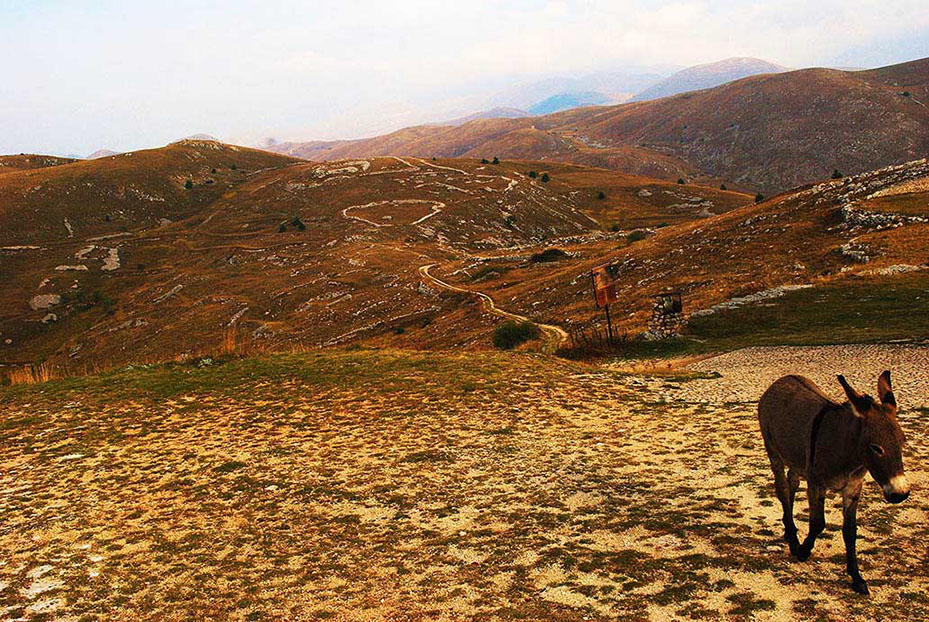
Donkey Budino follows us like a dog. 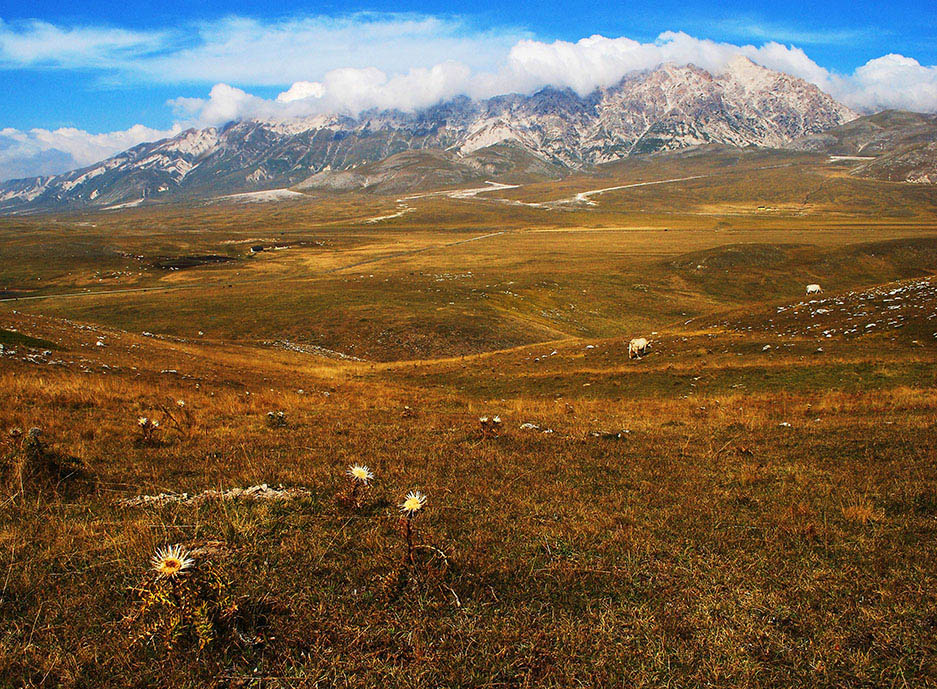
The beautiful Gran Sasso Imperatore. 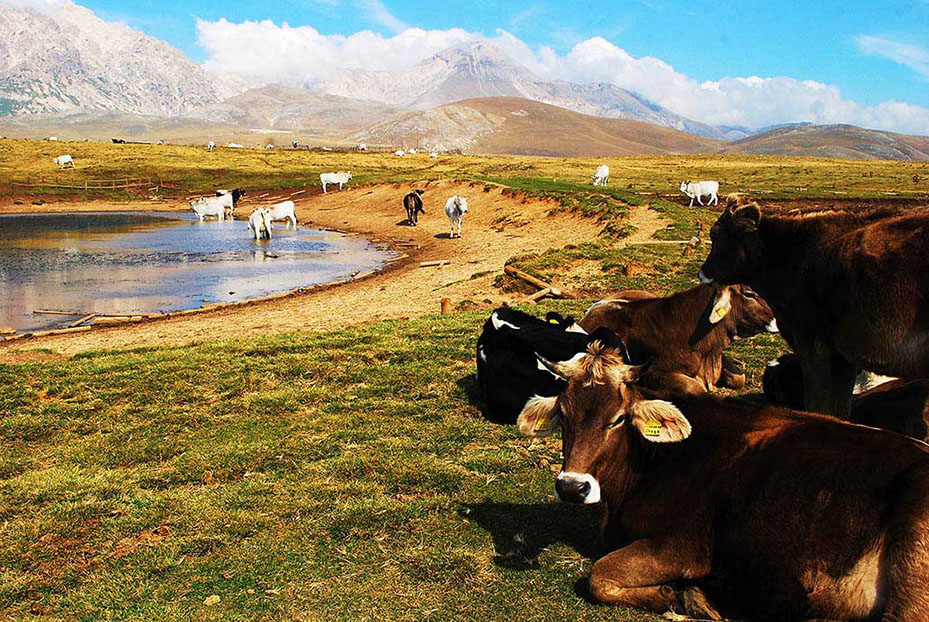
Cows quench their thirst on the plateau of Gran Sasso.
4. El Cedral Llanos, Venezuela
You won’t get there soon, given the inhumane political climate that prevails there, but Henk knows how special the unspoiled nature of Venezuela is. In January 2018, six months before the economic crisis broke out and millions of inhabitants had to flee their country, Henk spent a month in the dense wilderness of the country. And how can you explore the marshy landscape of El Cedral Llanos (the haceinda): indeed, from the back of a horse. This wetland area of more than 53,000 hectares is inhabited by anacondas, caimans, giant ants, red howler monkeys, pink river dolphins, pumas, jaguars, capibari’s and more than 350 bird species, including the flamingo.
From the Hato El Cedral Llanos ranch it is possible to explore the nature reserve.
Henk rode a half day on horseback across the steppe with a nature guide, came along rivers and drove straight through the low tide. He felt free: “Riding here gives an authentic ‘wild west feeling’. Because I don’t have much driving experience yet, I had to be careful not to fall. And I’ve had a week of saddle pain, lol. But the horse was very well behaved, and easily stepped along and through the water where in the distance caimans and birds were sunbathing.”
In addition to riding, you can also take a gamedrive or a boat trip from the ranch. You can also spend the night here. To get a good impression of the area, you need at least three days to get there.
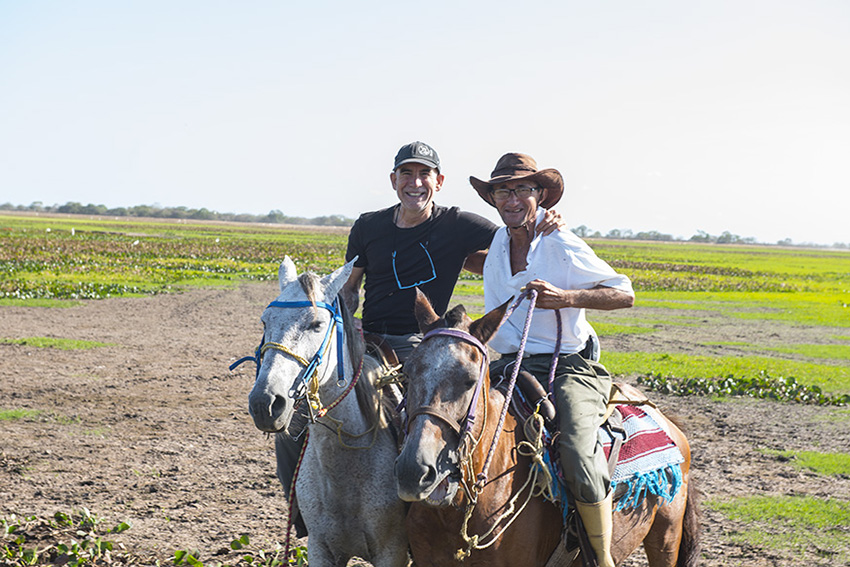
Henk (l) and his guide. 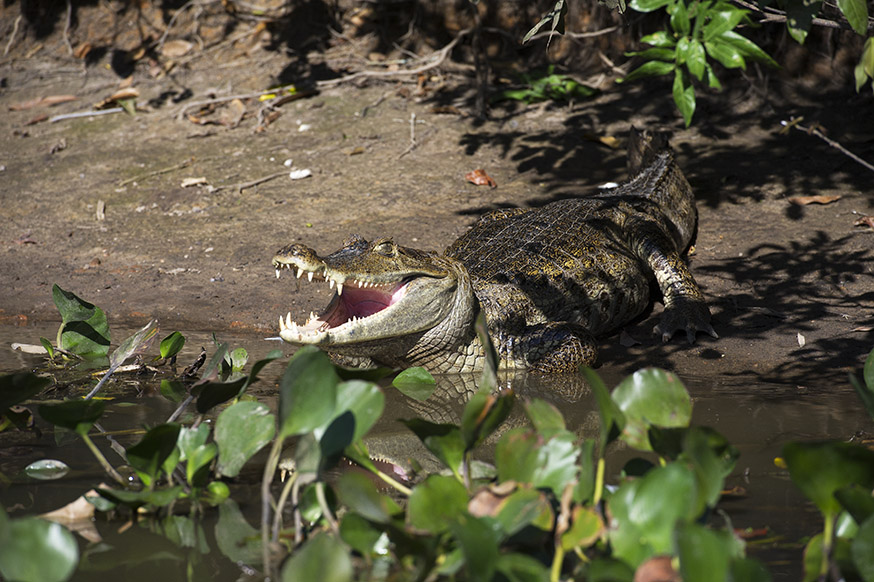
It’s a matter of paying attention along the banks… 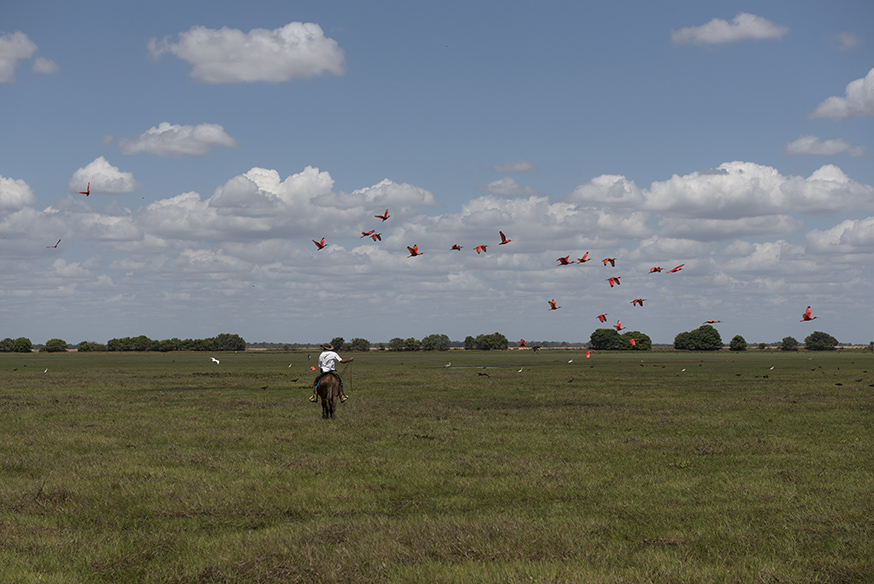
El Cedral 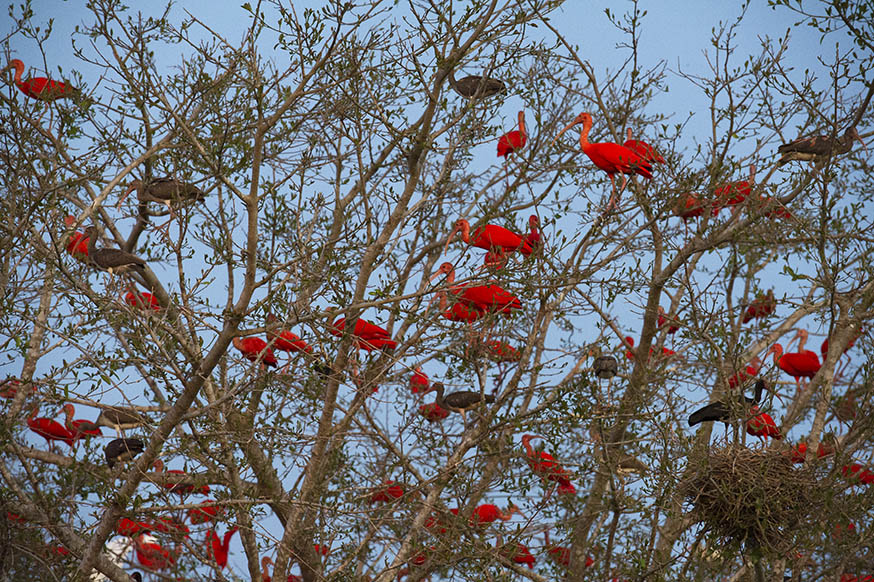
Flamingos colour the trees pink/orange. 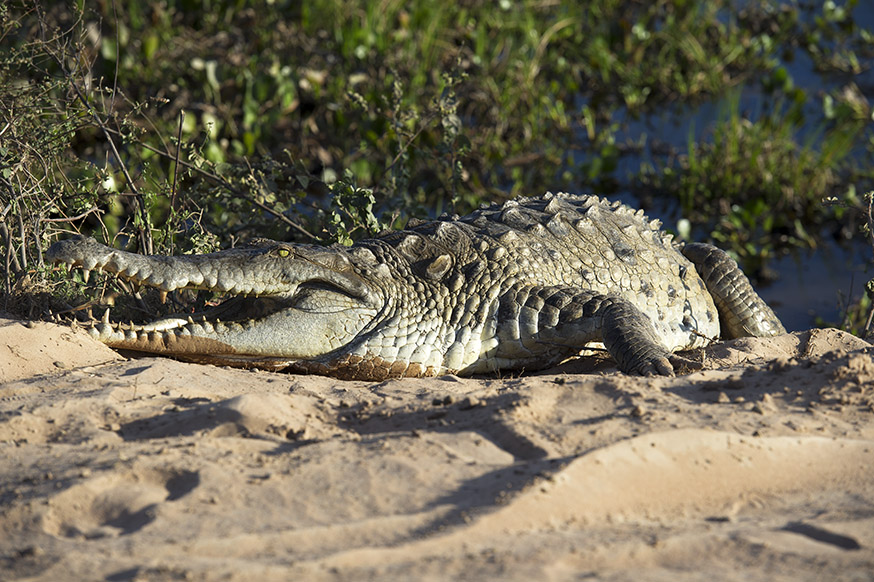
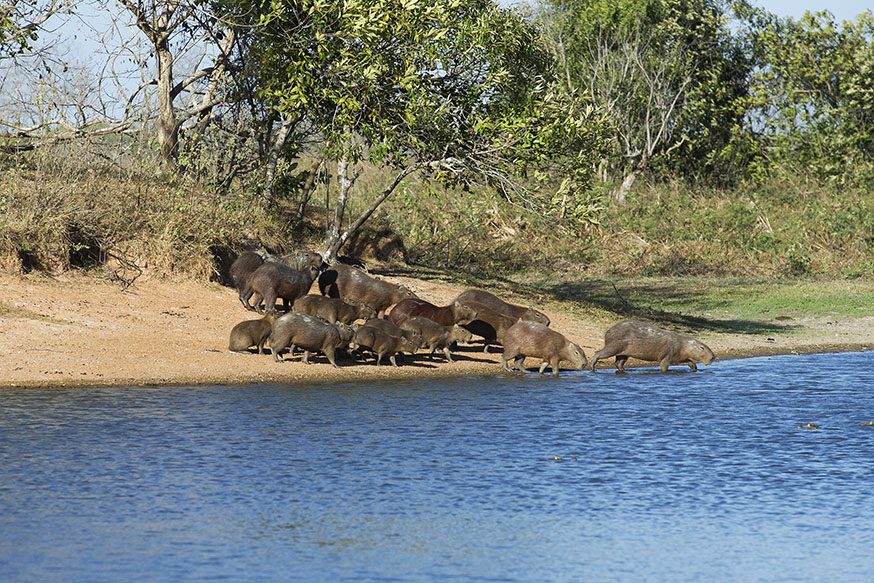
Capibaris 
5. County Wicklow, Ireland
Just half an hour outside Dublin, the beautiful green rolling countryside of County Wicklow beckons its visitors. In the backyard of the Irish capital, there’s no hustle and bustle, no city feeling. There are only small, authentic villages with pubs and churches that are the central meeting places of the local population. As if time has stood still. And rest. Lots of peace and quiet. To completely relax and experience the landscape slowly, I travelled through this beautiful area like a gypsy with a horse and cart. Maximum speed 5 to 10 kilometres per hour. In front of the green-red wooden covered wagon runs Buster, an extremely strong Irish Cobb (Tinker). Gypsies travelled through Ireland with this breed until the eighties. Buster doesn’t care about the water cold weather of early spring. He is used to it. On the billy goat the cold gets under the skin, so bring a blanket and put on a thick pair of trousers and a coat. Buster trudges relaxed through the rolling no man’s land of Cronybyrne, but needs some encouragement. “Come on, boy; let’s go! And here we go again. Each day we cover between 10 and 15 kilometres, which takes about four to seven hours, including a few stops. The open character of the Wicklow Mountains around Sally Gap is breathtaking, with vast yellow-green hills, rugged rock formations complemented by lower lying dense forests, fast-flowing rivers and large lakes. Pure nature. Pure nature.
In the evening you can suffer in the covered wagon. The temperature drops quickly and staying warm is difficult. A cup of tea, thick pyjamas, four blankets, a jug and the gas lamps provide lighting. J Just like the peace and quiet; no social media or other distractions. A good book and the view make you forget the cold.
The next morning it takes a lot of time to set up without help, while as an experienced rider I am used to something. A whole rigging is different from a saddle and bridle. Buster is good and waits patiently. After three days of intensive cooperation Buster and I have a good relationship. The trust has grown and the harnessing and steering are almost self-evident. The Irish Cobb works hard, but the last few kilometers he can be stolen. It is a steamy sweat. But all of a sudden he regains his energy, because he recognizes the impressive meadow full of cows and calves, embraced by mountains. He knows: he’s almost home, time to rest and graze.
You don’t have to have any experience to go out with Buster or one of the thirty other horses or donkeys. In advance it is explained step by step how to communicate with the horse, and how the beating and beating works and what to look out for.
For the AD I wrote an extensive article about this. You can Here and HERE read back. For more info: Clissmann Horse Caravans & Donkey Walking Holidays.
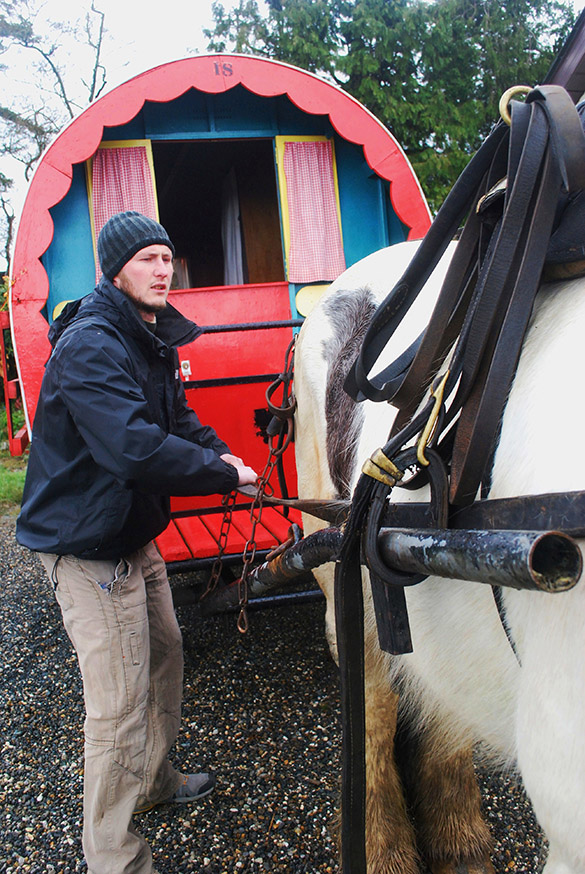
I’m getting an instruction from the rigging. 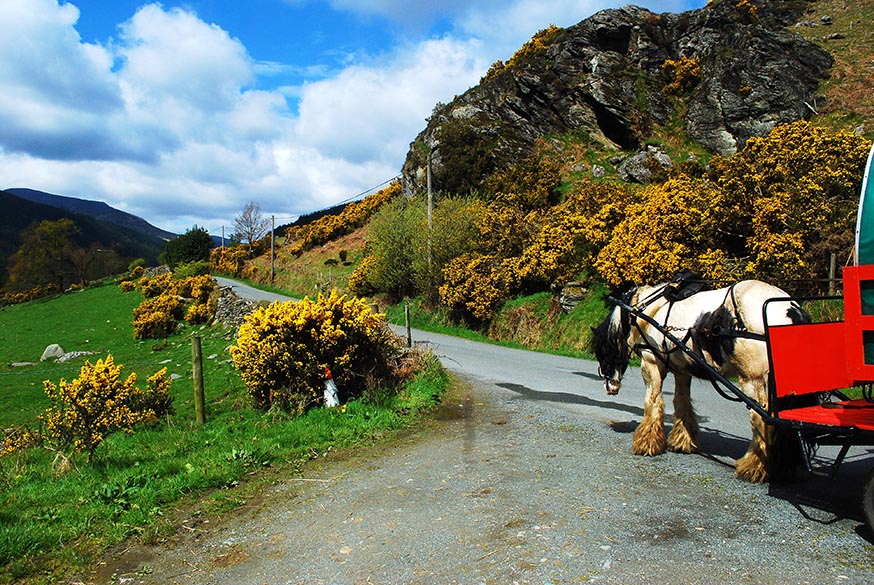
The landscape slowly passes us by along the way. 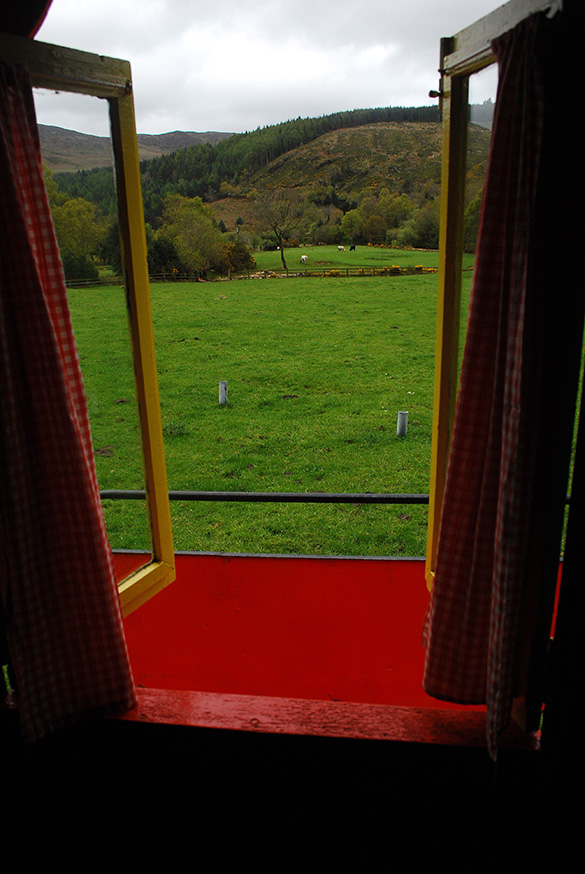
Nothing but green fields from the wagon. 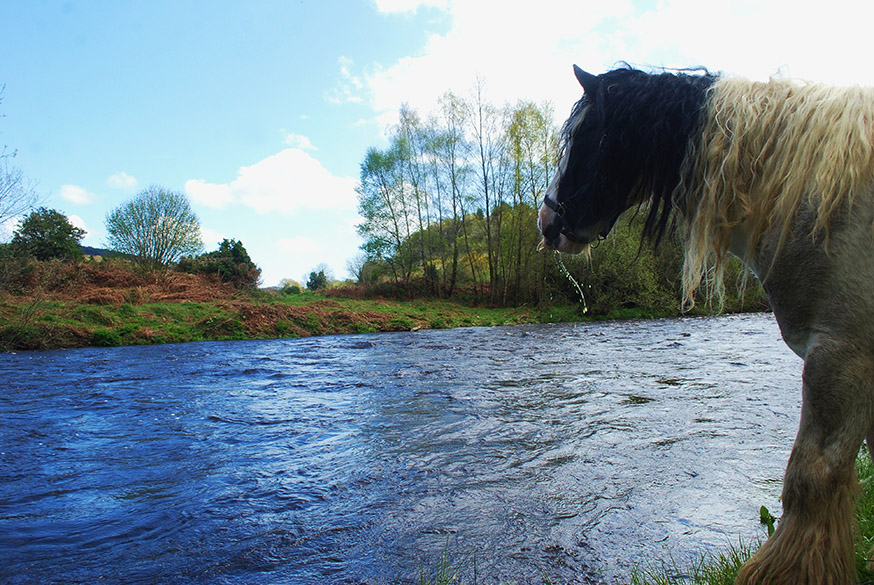
Buster’s quenching his thirst. 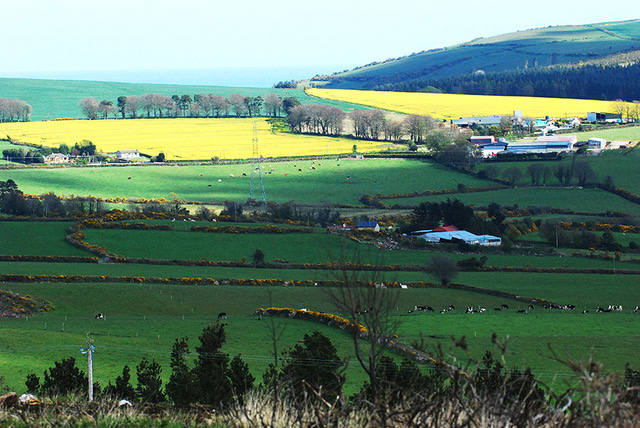
Surroundings Cronybyrne 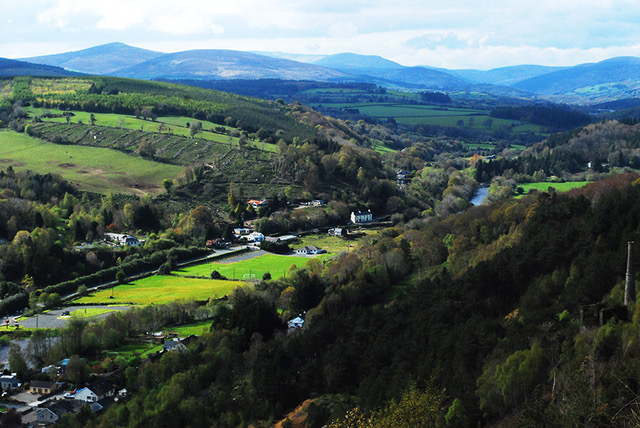
The beautiful scenery of County Wicklow. 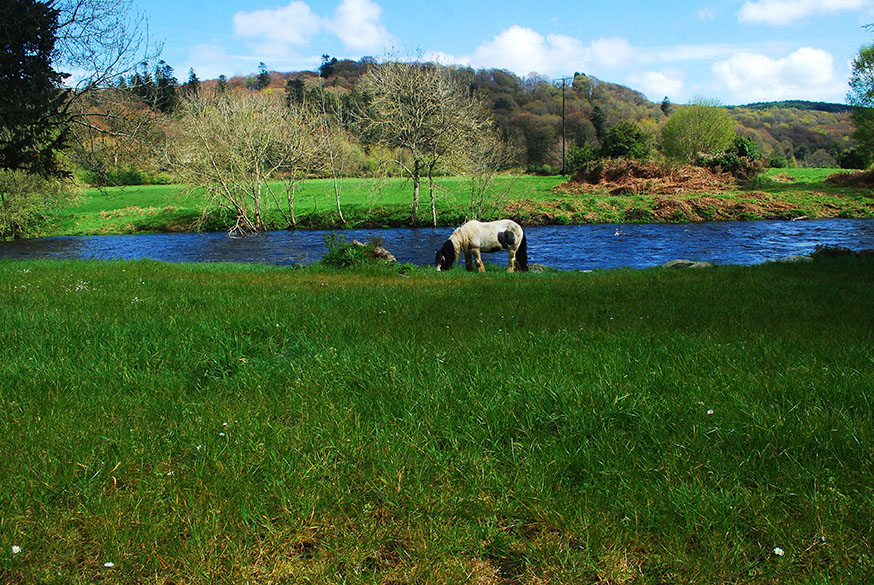
After the hard work, Buster gets to graze.
6. West Coast South Island, New Zealand
Also on the South Island of New Zealand you can go back in time with horse and cart. The enthusiastic Sophie Allen, together with her Clydesdale giant Duke and famous dog Pearl, will take you in tow for almost three hours to the beautiful and quiet coastline around Glen Road and Barrytown. When I made the trip, at the end of December 2017, the gentle and hardworking Murphy was still in front of the cart. Unfortunately he passed away. Together with my family I had a nice trip with Murphy.
Dog Pearl is faithfully sitting next to his boss on the buck. As soon as we crossed the main road and headed for the beach, Pearl jumps off the cart every few minutes to make a sprint to the coastline. The dog who is known for her tricks and is on the cover of the award-winning book A Dog’s Life by Graig Bullock (2015), constantly challenges Murphy. The horse doesn’t care, however, and strolls through the wet sand at ease. Meanwhile, Sophie talks about the early pioneers who settled here and the gold rush that prevailed here for some time.
After an hour we arrive at a beautiful ‘hidden’ waterhole where many birds rest, breed and search for food in the grassy surroundings. It is pleasantly warm and there is a sultry sea breeze. Murphy gets a refreshing ‘water bath’, while we go looking for Jade stones. The famous ‘Green Stone’, which originally belongs to the Maori people, is still found on the beaches of the west coast. The protective gemstone is said to attract happiness, prosperity and wealth. Of course this takes patience and time and after a quarter of an hour we have collected beautiful stones, but of course no Jade. For that we have to go to the village of Hokitika, which is known for the best quality of Jade. Murphy is charged again, so we continue walking. We don’t meet anyone. The beach and the sea are ours. We end the beach trip with a small beach picnic, where we toast our own marshmallows and sandwiches over a homemade campfire. Completely zen and satisfied with this wonderful afternoon we say goodbye to Sophie and her special four-legged friends.
A horse and carriage ride of Golden Sands Horse & Wagon Tourscan easily be combined with a visit to the famous Pancake Rocks (Punakaiki), which is only a quarter of an hour’s drive away.

